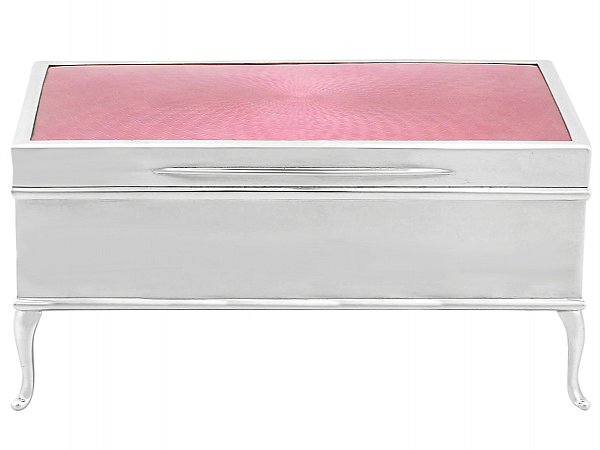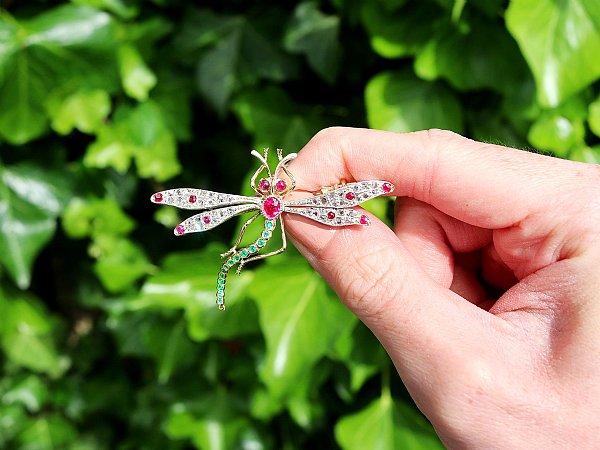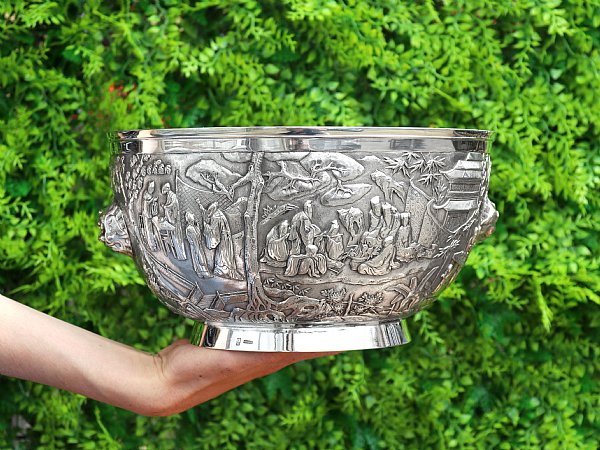Search Results for: '{{searchText}}'
Sorry...
We don't seem to have what you're looking for.
However we do have thousands of magnificent pieces of silver and jewellery available for you to view online. Browse our store using one of these categories.
Please wait for loading data... 
AC Silver is delighted to offer for sale a fine range of antique and vintage silver trinket boxes. Specialising in English, Scottish and Irish antique silverware we have a wonderful array of high-quality boxes across the Georgian, Victorian and Edwardian eras through to vintage and contemporary times.
Andrew Campbell, using his 40 years’ experience within the antique industry, handpicks all vintage and antique silver trinket boxes for sale. All of the fine boxes include free, and insured global shipping; in addition to offering a 14-day return policy, giving you an opportunity to view the piece in the comfort of your home.

Trinket boxes have taken on many forms since their first conception in ancient times. However, their purpose remains the same; to store jewellery and other items precious to the owner.
Originally, these boxes were used specifically for jewellery. These were in common use as early as 5000 BC in Ancient Egypt. The majority of Egyptians, both male and female, wore jewellery and these boxes were used to keep these gemstones encrusted items safe.
In Ancient Rome, jewellery was a status symbol. Rings and brooches were utilised to represent one’s status in society and boxes were needed for security and storage purposes.
Trinket trays and boxes were produced for 17th and 18th century toilet services; however early examples of these are rare. Victorian and Edwardian examples of trinket boxes are far more common. This is because owning jewellery was a luxury until the Victorian era - let alone possessing so much a box was needed to store it all. Fine jewellery and other items became available to the masses after the industrial revolution due to the reduction in production costs.
This led to a demand for trinket boxes, which were much smaller than jewellery boxes and therefore better suited to the needs of the middle class who did not yet possess an abundance of jewellery.
In Victorian households, collectables and other items of interested were also stashed inside these boxes. This is why they are known as ‘trinket boxes’ rather than just ‘jewellery boxes’, although of course jewellery was also stored in them.
Trinket boxes were produced in large numbers around this time. Many were lined with coloured plush or velvet. More elaborate designs had interior divisions and trays for rings and other pieces of jewellery. It was also common to see trinket boxes so small that they could only contain one item, such as a single ring. Ornate exteriors were created to reflect the value of the contents.
The Edwardian era saw the introduction of new styles of trinket box. These included small circular or oblong boxes that stood on cabriole legs. These often-featured lids made of tortoiseshell or other luxurious materials.
Novelty trinket boxes were popular in the early 20th century. These frequently had false drawer fronts and cupboard doors, although some were created which did feature multiple individual drawers used to hold only one ring.




